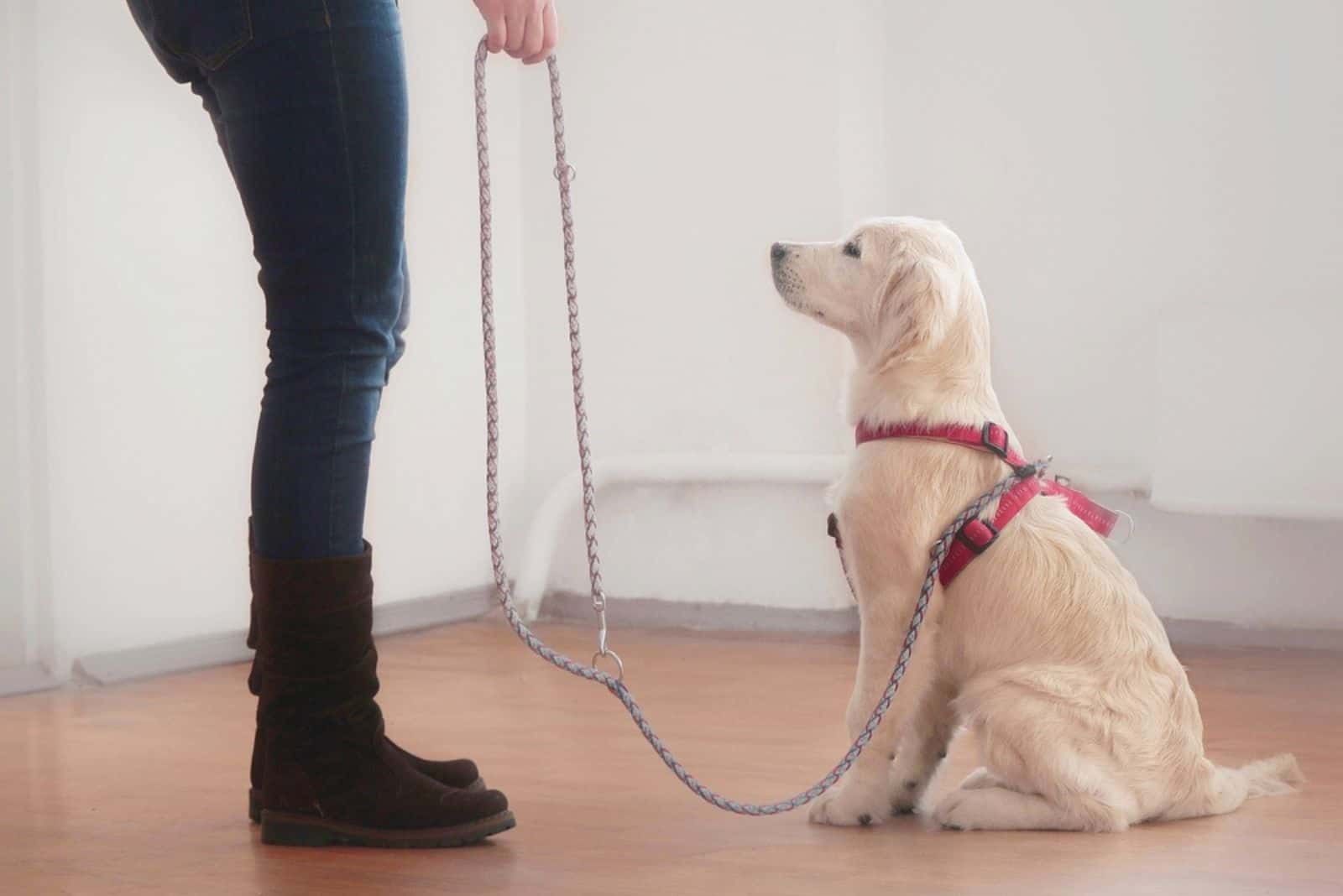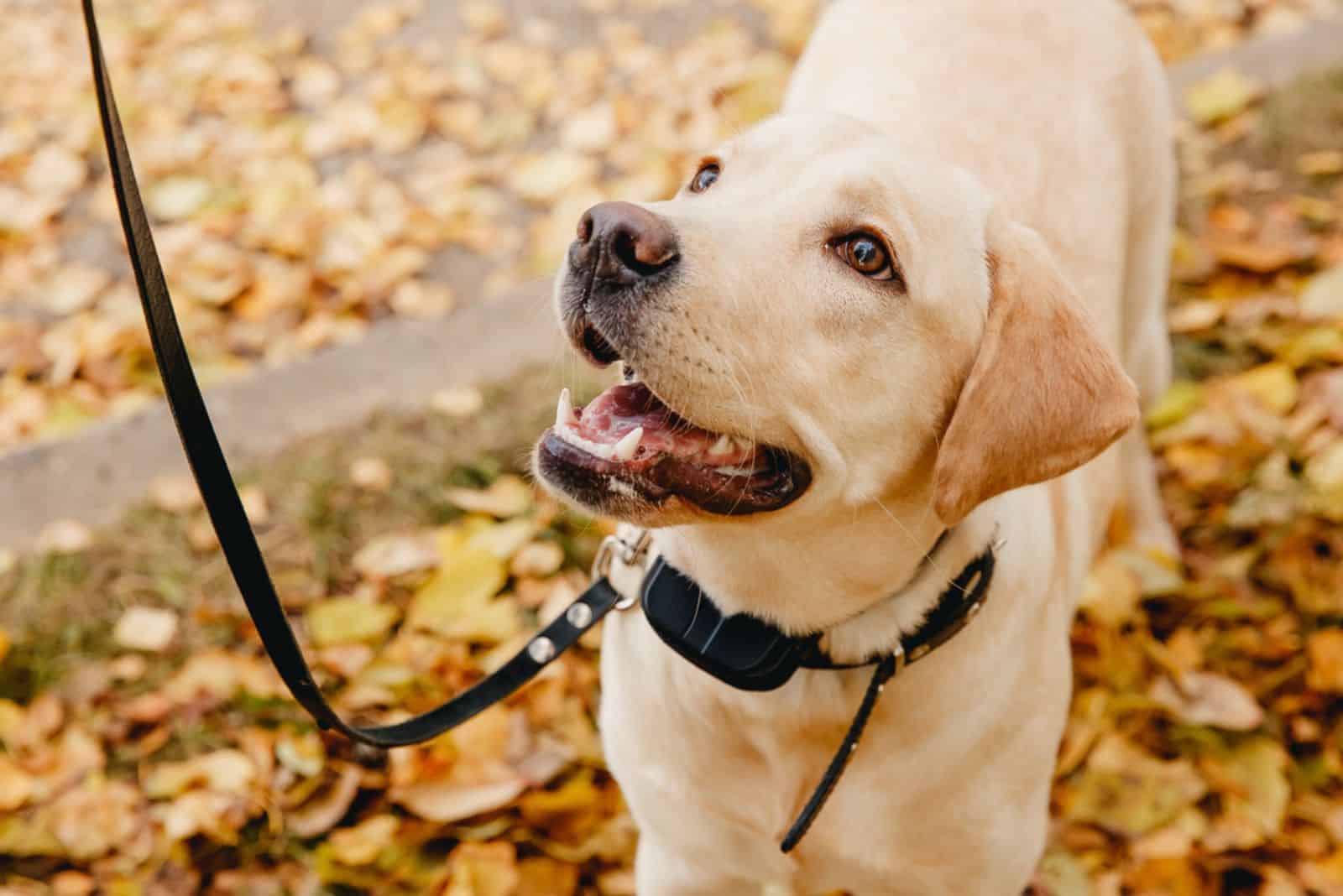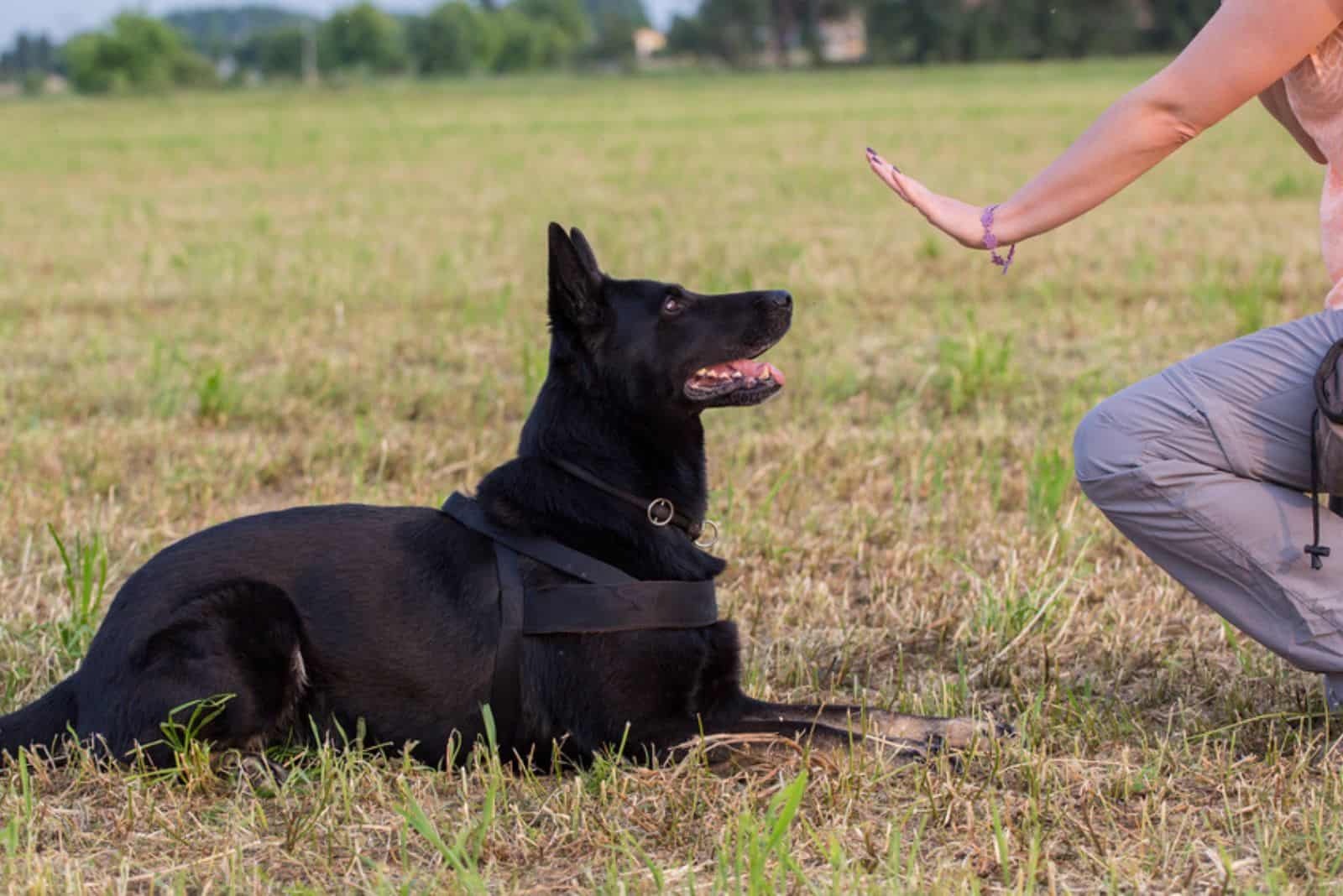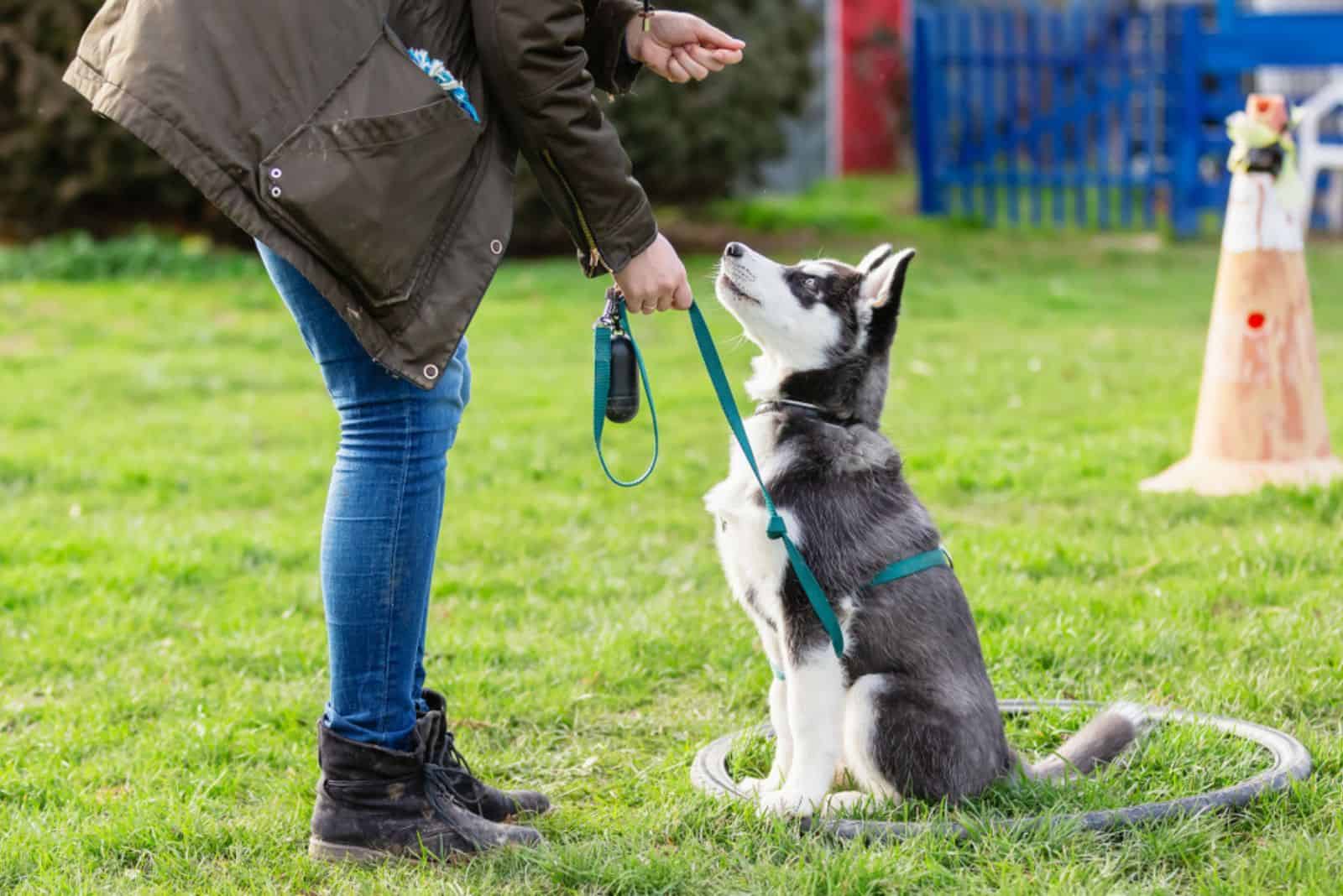Training experts across the globe agree that for a dog to understand what is being said, there need to be several training mechanisms at work. Is physical correction necessary in dog training?
Many dogs are successfully trained without it, but an equally large number of dogs do not respond to positive reinforcement training. Is this a situation that calls for corrective training? Join me in this short discussion on its uses and methods of application.
It Is A Tool For Specific Situations
There are varying understandings of what physical correction means in dog training. It is loosely used to describe punishment, and countless dog trainers who swear on exclusively using positive reinforcement to train dogs ostracize those who use corrective training techniques.
Large dog breeds that show lower spans of attention and food or toy drive often benefit from physical corrections. Cane Corso training is one example where corrective techniques work wonders.
At the end of the day, it will mostly depend on the individual dog. Some will have higher corrective training thresholds than others. This will influence the effectiveness of using the technique, making you question whether professional help is required.
To properly apply physical corrections, you will need to see it in action. YouTube videos exist on this topic, but the best way of going about it is going to a certified trainer with experience in training stubborn dogs.
A dog’s age plays a major role in how much progress you will be able to make without using corrective techniques. Younger dogs have big appetites, which means treats and favorite foods usually do the job.
Older dogs that already established their own ways of behaving during training are more likely to require physical correction. Cutting to the chase, physical corrections are not necessary, except when working with a dog that simply has no incentive to work for a standard reward.
Practical Examples Of How Corrective Training Is Used

We could theorize and talk about hypothetical scenarios, but seeing a certified trainer during corrective training will open your eyes to the possibilities it brings with good real-life applications.
Most dog owners dream about off-leash walks, seeing how impressive it looks. Undesirable behavior can be expressed in both small and large dog breeds, so corrective training is not exclusively reserved for Rottweilers, German shepherds, Cane Corsi, etc.
The smaller the dog, the easier it is to perform it correctly. Seeing how small dogs are more often aggressive than large ones, your Chihuahua, Dachshund, or other tiny canines might greatly benefit from physical correction.
Imagine you are walking with your new dog, and you are getting frustrated by the lack of focus the dog is displaying. You try recalling it, bait with food or a favorite toy, but nothing seems to work.
Assuming your dog is on a leash (as all dogs undergoing training should be), a quick but assertive pull on the leash will point the dog in the right direction. Practicing heeling without a leash is next to impossible with a disinterested dog.
Heeling is perhaps the most important aspect of training if you want to avoid your dog pulling and dragging you anywhere it pleases. It usually starts with showing your dog that eye contact means reward.
Once a dog’s stomach fills up, or scents, sounds, or other dogs, enter the picture, you can easily become an irrelevant object that serves as an anchor.
Other Examples Of Physical Correction

Out of all undesirable behavior, aggression and fixation are probably the worst to deal with. Dogs that are strong, confident, and in charge of your pack (it should be you), will challenge any people or animals they come across.
Although it is done to “protect” the pack, the consequences often include bite injuries, legal action, fines, and even putting your dog down. To avoid this, shock or vibration collars prove time and time again that physical correction does not always involve an owner’s touch.
This article with in-depth information about using shock collars on Rottweilers speaks about correct usage and how the device works, so make sure to check it out before going out spending money. This article might help with training an overprotective dog.
There are people out there who claim it is barbaric and causes harm to the dog, but it could not be farther from the truth. Shock and vibration collars send a weak impulse from a vibration motor or static charge that is equivalent to a flick on your dog’s neck.
Its main purpose is to redirect the attention to, basically, nothing. It is still a physical correction technique because it corrects the unwanted behavior by applying a small amount of pressure on the dog’s body.
A small nudge with your finger in the area where the lower ribs and groin meet is another way of physically correcting your dog through redirection. However, this method should be avoided by dog owners, as its effectiveness largely depends on your reaction time and situation.
Timing Physical Corrections Right Is Key

Now that you know how physical corrections work, it is important to know when to physically correct a dog. As you probably guessed, it has a lot to do with body language.
Tail positions, ear movement, posture, eyes, and mouth all participate in communication with other dogs and humans. Naturally, you need to learn to interpret these signals in order to successfully apply physical correction methods.
The entire point of corrective training is to prevent behavior. Waiting for a behavior to happen and then using corrective methods is a common misconception. I will admit that the naming of this training technique is misleading.
It can also be used to condition a dog to respond in a certain way when particular triggers are introduced. One example of this is when a dog wants to go smell something in the grass and pulls the leash.
The proper way of physically correcting this would be to pull the leash and move in a direction opposite to the one the dog is determined to go. As soon as you lose your dog’s focus, keep moving in a different direction with a slight tug of the leash.
Preventing undesirable behavior with a leash or shock collar means you will have to read the body language of your dog properly. Tense posture, piercing gazes, and an upright tail without movement is predatory behavior.
A dog that sends any of these body “messages” needs to be corrected with a quick tug of the leash or by pressing a button to trigger the vibration or shock collar. The right moment for any physical correction is as soon as you spot the change in body language.
Note: Do not anticipate your dog behaving in a certain way, because it will create anxiety in you, which easily transfers to our canine companions. If a dog feels their owner is insecure or anxious, it will take the alpha role and defend its pack.
Do Not Use This Technique Without Consulting A Dog Trainer First

Oftentimes, I have come across dog owners who try to tell me how their dog behaves as though I never saw stubborn, aggressive, disinterested, fearful or any other kind of undesirable behavior in dogs before.
Many of them even used corrective training techniques before going to a trainer. This carries many negatives, such as incorrect usage of them or desensitization to the same techniques.
It becomes exponentially more difficult to physically correct a dog that has developed “resistance” to physical stimuli to snap out of a mode that leads to undesirable behavior.
Summary
The definitive answer to “Is physical correction necessary in dog training?” is “It depends”. Too many individual characteristics of your dog and owner-mediated use of the technique can make it either the only viable method or completely useless in future use.
For most dog owners’ dog training requirements, it is not a necessity, but those struggling with leash walking, heeling, fixation, and aggressive behavior can find salvation in using corrective training techniques.
Most importantly, do not improvise with physical corrections. First visit a professional trainer who adequately uses the method, and they will teach you how to use it in practice. It will require effort from your side, too, so do not think it is a quick and easy fix.
Definitely try all the other training techniques at your disposal before resorting to physical correction. It takes patience and practice mastering physical correction, so do not take it lightly.















